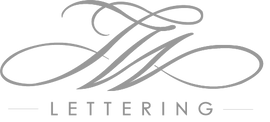A Smarter Live Engraving Workflow: How QR Codes Transformed Beazley’s 80-Year Celebration

There’s something captivating about watching a blank surface come to life with engraving - a name or phrase slowly etched in metal, glass, or stone, turning an everyday object into something worth keeping. At Beazley’s milestone anniversary, guests weren’t just receiving a gift, they were taking home a tangible symbol of eight decades of global excellence. Each personalized beer stein became a keepsake, one that carried the weight of celebration, craftsmanship, and memory.
But behind that elegant experience was a quiet piece of technology working its magic: a QR code workflow that made the process faster, smoother, and completely hands-free.
At Beazley’s global 80-year anniversary celebration in Toronto, we wanted the personalization process to feel clean, seamless and intuitive for guests. To complement the “Around the World in 80 Years” theme, a QR code engraving workflow was implemented and it transformed how guests placed their engraving requests - making the experience smoother, faster, and hands-free from start to finish. Let's take a look at how it works!
Watch my Instagram Reels recap of the event HERE!
The QR Code Workflow, Step-by-Step
Step 1: Guests scan the QR code which takes them to a Google Form
At the engraving station, clear signage displayed a QR code with simple instructions: “Scan to enter your personalization.” Guests could scan directly with their phones, instantly opening a Google form. This eliminates paper slips or long sign-up lines, so right from the start, it feels modern and efficient.
Step 2: Guests fill out their engraving request
As guests opened up the Google Form from their phone, they would follow the brief instructions and entered their name, engraving text, and select any special customizations. Because they typed their own details, it puts everything in their control. Everything was legible and accurate to avoid spelling errors, guesswork, and misinterpretations of handwriting.
Step 3: Requests appear instantly at the engraving station
Each submission arrived in real time on my screen behind the desk. As soon as a guest hit “submit,” I could start engraving immediately. This constant digital queue kept production flowing and reduced idle time, which is especially helpful for large-scale events.
Step 4: Guests relax and enjoy the event
After submitting, guests could freely enjoy the celebration without carrying their item around all evening. Since the gifts were beer steins (beautiful but bulky), this hands-free experience was a big bonus. It kept guests comfortable to mingle around and enjoy the festivities.
Step 5: Completed pieces are staged in a pickup zone
As engravings were finished, each item was placed in a designated area labeled with the corresponding name/identifier or in alphabetical order. Guests and staff could easily match the engraved piece to the right person at the end of the night, keeping everything organized and polished.
Step 6: Guests collect their engraved item at the end
By the time guests were ready to leave, their personalized items were waiting for them - perfectly engraved, clearly labeled, and easy to find. This system allowed for a smooth exit flow without any last-minute confusion or delays.
Step 7: Optional support for guests who can’t scan
For anyone without a smartphone or who preferred help, staff or the artist ourselves could open the form manually on a shared tablet and submit the request. Alternatively, traditional pen & paper is always prepared as backup. That small touch of flexibility ensured inclusivity while keeping the workflow consistent.
 |
 |
 |
 |
When This Method Shines and When It’s Less Ideal
The QR code system is best suited for corporate events, weddings, galas, milestone celebrations, and brand activations - any occasion where guests stay until the end and where gifts are bulky, fragile, or best retrieved later. It’s also ideal when you want to collect attendee data or feedback through the submission form.
However, it’s not necessary for retail or in-store activations, where customers are passing through quickly, or for on-the-spot personalizations where guests receive their item immediately and leave. In those cases, a direct, face-to-face workflow keeps things simpler.
Throughout the process, another key advantage emerged: the ability to collect useful information. When appropriate, clients can add optional fields such as an email, or a short survey to the form. This not only supports personalization accuracy but also creates opportunities for thoughtful brand engagement or post-event follow-ups.
Why It’s a Game-Changer for Live Events
For brands and event planners, introducing a QR code workflow creates a sense of modern refinement and thoughtfulness that guests notice. It minimizes errors, streamlines logistics, and allows the artist (me!) to focus more on creating beautiful, meaningful work.
As a Toronto calligrapher and engraving artist specializing in corporate events, weddings, and luxury brand activations, I’ve seen firsthand how this system improves both the guest experience and the event team’s workflow. Whether you’re hosting a milestone celebration like Beazley or a high-end holiday party, the QR code system helps ensure that personalization feels effortless, for everyone!


